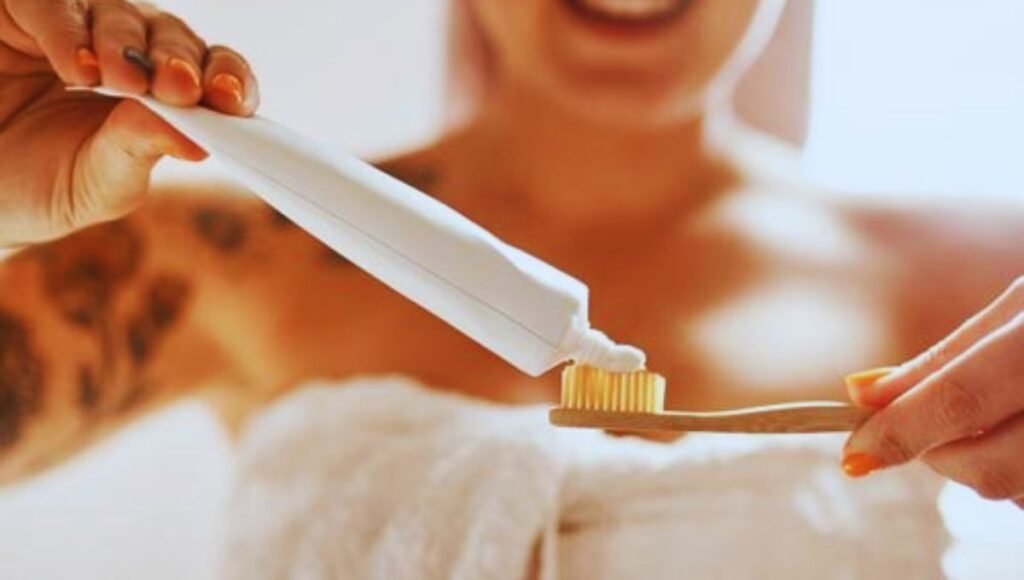Can I Take a Hot Bath After Tooth Extraction?
You might wonder if you can enjoy a soothing hot bath after having a tooth extracted. While it’s tempting to think that the steamy water could ease your discomfort, it’s essential to take into account the risks involved. Heat can cause your blood vessels to expand, which might lead to increased bleeding or even disrupt the formation of a crucial blood clot in the socket. What’s more, the warm, moist environment could potentially encourage bacterial growth, complicating your recovery. So, what are the safer alternatives to manage your pain and stress during this delicate time? Let’s explore some effective options that ensure your healing process remains on track.
Understanding Tooth Extraction Recovery

Recovering from a tooth extraction requires careful adherence to post-operative guidelines to guarantee a smooth and safe healing process. Initially, managing your pain and controlling bleeding are paramount. You’ll likely be prescribed or advised to take pain relievers, which you must use as directed to alleviate discomfort. It’s essential not to skip doses in the early stages when pain is typically more intense.
To minimize bleeding, your dentist will advise you to bite down gently on a gauze pad for the first few hours post-extraction. Avoiding strenuous activities can also help prevent the dislodgment of the blood clot forming in the socket, a key step in the healing process.
Swelling is another common post-extraction issue. To combat this, apply an ice pack to the affected area for 10 minutes at a time during the first 24 hours. This not only reduces swelling but can also help with pain relief.
Diet restrictions play a significant role as well. Stick to soft foods and clear liquids for the first few days. Avoid hot drinks and spicy foods which can irritate the extraction site.
Following these guidelines will help guarantee that your recovery is as comfortable and complication-free as possible.
Risks of Heat Exposure Post-Extraction
After a tooth extraction, exposing the affected area to heat can increase the risk of complications such as infection and delayed healing. It’s important to understand how heat can impact your recovery.
When you’re considering a hot bath or using heat therapy as a form of relaxation or pain relief, you should be particularly cautious about the bath temperature.
Elevated temperatures can cause the blood vessels in the extraction site to dilate. This dilation increases blood flow and can lead to a higher risk of bleeding, which can disrupt the formation of the blood clot that’s essential for healing. A dislodged clot can result in a painful condition known as dry socket, where the underlying bone and nerves are exposed to air and food particles, increasing the risk of infection.
Furthermore, warmth and moisture create an ideal environment for bacteria to thrive. A hot, steamy bathroom can, accordingly, increase the chances of bacterial growth around the extraction site, compounding the risk of infection.
Because of these risks, it’s advisable to monitor and control the temperature of your bath carefully and to avoid any direct heat application to the face or jaw area during your recovery period.
Alternatives to Hot Baths
If you’re seeking safer options than a hot bath after tooth extraction, consider these effective alternatives.
One highly recommended method to manage discomfort is the use of cold compresses. Applying a cold compress to the cheek near the extraction site can provide significant pain relief. It helps reduce swelling and numbs the area, which can alleviate discomfort without the risks associated with heat exposure.
Another soothing alternative is sipping warm tea. Choose a herbal tea like chamomile or peppermint, which are known for their calming properties. Warm tea can offer a sense of relaxation and a mild soothing effect for your oral tissues. It’s important, however, to make sure the tea isn’t too hot; a gentle warmth is beneficial, but high temperatures might aggravate the site.
Both cold compresses and warm tea are practical, easily accessible options that support your recovery without the complications linked to taking a hot bath. They provide comfort and aid in your healing process, allowing you to relax and recover with peace of mind.
Tips for Safe Recovery After Extraction
To ensure a safe recovery from your tooth extraction, closely follow your dentist’s post-operative care instructions. Managing your recovery timeline effectively and focusing on pain management are essential for a smooth healing process.
Here’s a simple guide to assist you:
| Day After Extraction | Activity | Pain Management |
|---|---|---|
| Day 1 | Rest | Take prescribed painkillers and apply ice packs to reduce swelling. |
| Day 2-3 | Minimal Activity | Continue with painkillers. Avoid strenuous activity that might dislodge the blood clot. |
| Day 4-7 | Gradual Return to Normal Activities | Start easing off pain medication as discomfort decreases. |
| Week 2 | Normal Activity | Most major discomfort should be subsiding; however, continue to be cautious. |
| Week 3+ | Full Activity | Pain should be minimal; resume all normal activities. |
When to Consult Your Dentist

Consult your dentist immediately if you experience persistent pain, swelling, or signs of infection following your tooth extraction. It’s important to keep track of your healing progress and be aware of any changes that might indicate complications.
While some discomfort is expected after surgery, post-extraction pain that worsens over time or doesn’t subside with prescribed painkillers needs professional attention.
If you notice unusual symptoms such as excessive bleeding, pus, foul odor, or a fever, these could be signs of infection. Don’t wait it out, as ignoring these symptoms can lead to more severe health issues.
Additionally, if you feel that the extraction site isn’t healing as expected, or if you encounter difficulties with eating or drinking, it’s significant to check in with your dentist. They might need to reassess your situation or adjust your treatment plan to ensure best recovery.
Frequently Asked Questions
Can Hot Baths Affect the Taste or Sensation in My Mouth Post-Extraction?
Taking a hot bath shouldn’t affect taste changes or sensation in your mouth post-extraction. However, monitor your mouth sensitivity, as personal responses can vary. Consult your dentist if you notice any unusual symptoms.
Will a Hot Bath Increase Bleeding Hours After Tooth Extraction?
Taking a hot bath may increase bleeding concerns during your healing process, as heat can dilate blood vessels. It’s best to avoid hot baths immediately after surgery to support ideal recovery.
Can I Use Scented Bath Products During My First Bath Post-Extraction?
You should avoid using scented bath products during your first bath post-extraction. Keep the bath temperature warm, not hot, and limit your bath duration to prevent any complications or irritation to the extraction site.
How Soon Can I Take a Bath With Epsom Salt After Extraction?
You should wait at least 48 hours before taking a bath with Epsom salts to avoid sensitivity issues and guarantee proper healing. Keep the bath temperature warm, not hot, to prevent complications.
Does a Hot Bath Affect Medications Prescribed After Tooth Extraction?
Yes, a hot bath can affect medications prescribed after tooth extraction. High bath temperatures might alter the effectiveness of your meds and potentially slow the healing process, so it’s best to check with your doctor.
Conclusion
It’s important to steer clear of hot baths after your tooth extraction to avoid complications. Instead, opt for cold compresses to reduce swelling and soothe pain.
If you need to relax, a warm, not hot, tea can be comforting. Always follow your dentist’s guidance closely and contact them if you experience unusual symptoms.
Remember, taking the necessary steps now can guarantee a smoother and quicker recovery. Stay safe and prioritize your health!